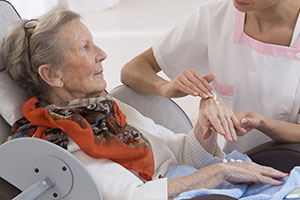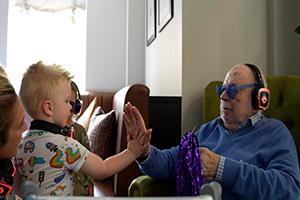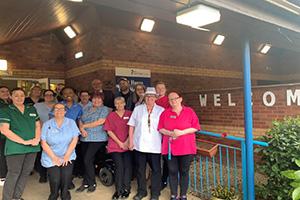Keeping your care home hygienic
Keeping your care home hygienic: Making sure residents are healthy and happy
Safe hygiene practices, infection control and health and wellbeing play a major role in the care of residents and is the responsibility of all staff.
In 2016, in response to the implementation of the (Care Act 2014), ‘think local, act personal’ (TLAP) carried out a survey commissioned by the Department of Health (DOH). they discovered that a proportion of people in receipt of care felt they were not respected, whilst others felt that care practices amongst staff were often ‘different’ and not comparable to others. This highlights the at times inconsistent standards from individuals and service providers.
Within the United Kingdom (UK), the Care Quality Commission (CQC) carry out regulation of health and social care services ensuring they meet the required standards in relation to quality of the provision. The CQC work with the service providers, staff and service users (residents) to make improvements.
Cleanliness is vital within a care home environment. A clean care home not only keeps your residents, staff and visitors safe, it also impacts on how they feel both physically and mentally.
This can have a huge impact on a person’s mental wellbeing, as no-one wants to live in an environment that is unclean. This is also true for visitors and people choosing a home for a loved one, they are unlikely to select a care home that does not appear clean or smell fresh.
Here at the University of Northampton, we instil this knowledge into our students from the onset with skills for practice (getting them ready for practical/placement experience). This commences with the fundamentals of personal hygiene such as handwashing techniques and effective communication.
Hygiene
Personal hygiene for most people is a private activity. Yet for some in a care home, due to mobility or health related issues, the resident may need assistance with the most intimate of tasks.
The key here is to aid with maintaining the resident’s independence, dignity, choice and privacy ensuring you are sensitive to the person’s needs, aiming to make the experience as positive and comfortable as possible.
Using good personal protective equipment (PPE) is vital to ensure the spread of infection is minimised, staff play a major role in this by  ensuring they use best the latest, evidenced based practice to ensure they aim to prevent the spread of infection, e.g. wear gloves whilst providing care.
ensuring they use best the latest, evidenced based practice to ensure they aim to prevent the spread of infection, e.g. wear gloves whilst providing care.
It is both the responsibility of the organisation and staff to ensure that infection prevention and control (IPC) is maximised, the World Health Organisation (WHO) found that IPC is a fundamental aspect for quality health care in relation to patient safety (WHO, 2019). This can be maintained by rigorous handwashing techniques or simply by participating in regular training activities for staff, residents and/or carers/relatives. (NICE, 2014).
Living in such close proximity within a care home means that infections are likely to spread. The people within the care environments are likely to have weaker immunity so are susceptible to easily transmitted infections. Residents, staff and visitors should feel safe knowing that appropriate measures are taken to ensure they are in a safe, clean and comfortable environment.
Home from Home
The Enhancing Health and Wellbeing Module on our foundation degree very much focuses on supporting individuals to enhance their health and wellbeing.
When living in a care home the resident should feel at home. Likewise, when choosing the right environment, the choice would be made based on cleanliness and odour. Encouraging the person to bring along personal possessions can aid with the transition to long term care and helps the resident to feel valued, happy and at home in their new environment (Brownie, et al, 2014). Stigma often surrounds care home environments and offensive odours, particularly in relation to older people.
A good cleaning regime from the housekeeping team and staff members can aid with ensuring good practices are adhered to in relation to cleaning and removal of waste products. There are also many products available that can aid with odour elimination such as air fresheners and scented cleaning products.
Staff should ensure they attend the workplace looking presentable and treat the care environment as the residents’ place of residence, this is their ‘home’ and should be treated and respected as such.
Here at the University of Northampton, we teach the students the principles around professionalism. With placement modules that provide ‘hands on’ experience with support from experts in practice. Care homes very often like to offer students employment following their placement, which is testament to the quality of the student and also to the learning experiences they have received whilst here with us and on placement.
Maintaining good standards of care and ensuring staff are trained adequately is vital to ensure residents are safeguarded. During 2017-18 there were 394,655 concerns of abuse raised in relation to Adult Safeguarding, an increase of 8.2% on the previous year (NHS, 2018). Within the Faculty of Health Society and Education we are dedicated to providing the message that good, quality care matters.
It is vital that our students leave us as conscientious health and social care staff that are able to deliver and celebrate good practice and challenge poor practice.





